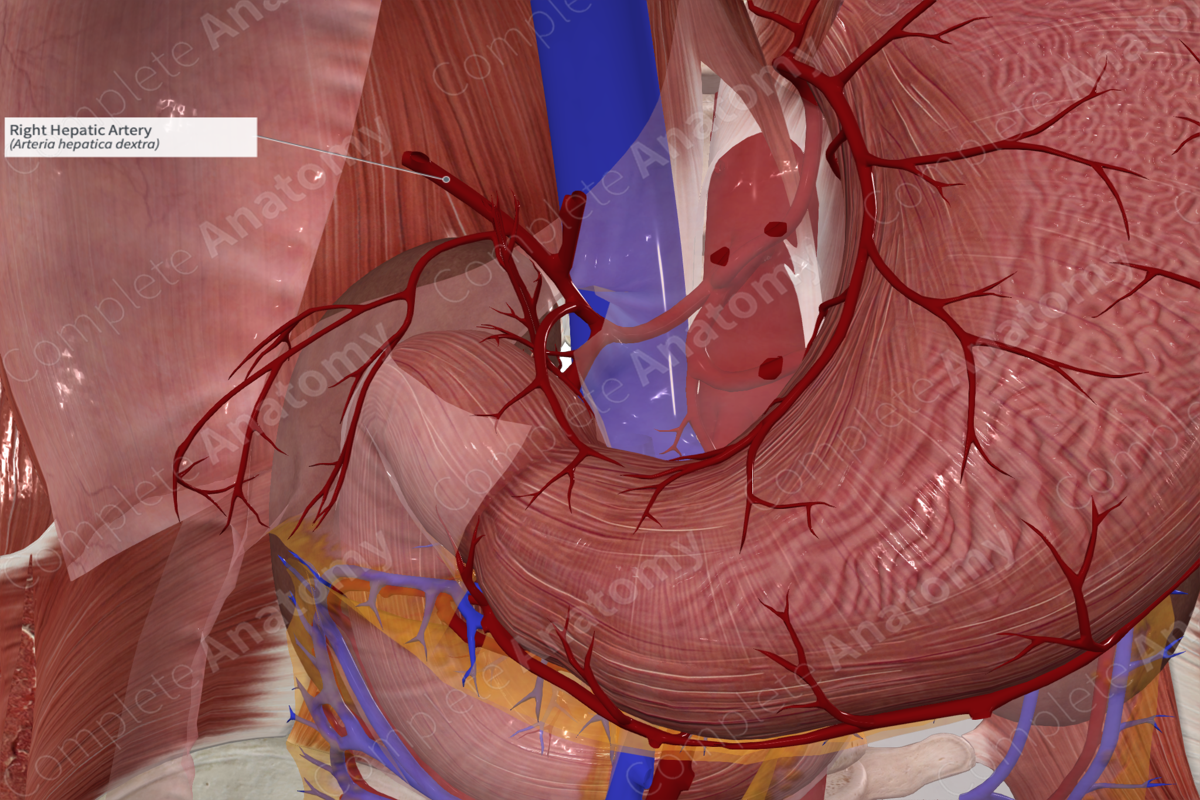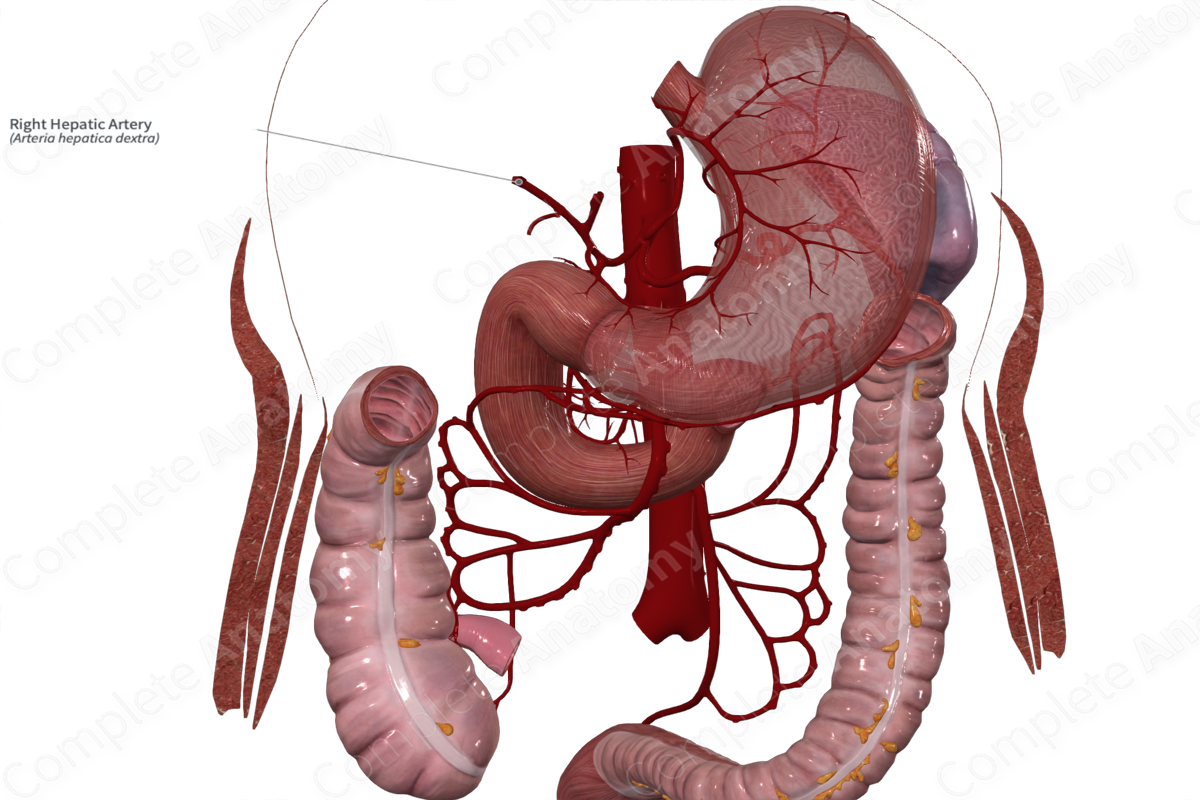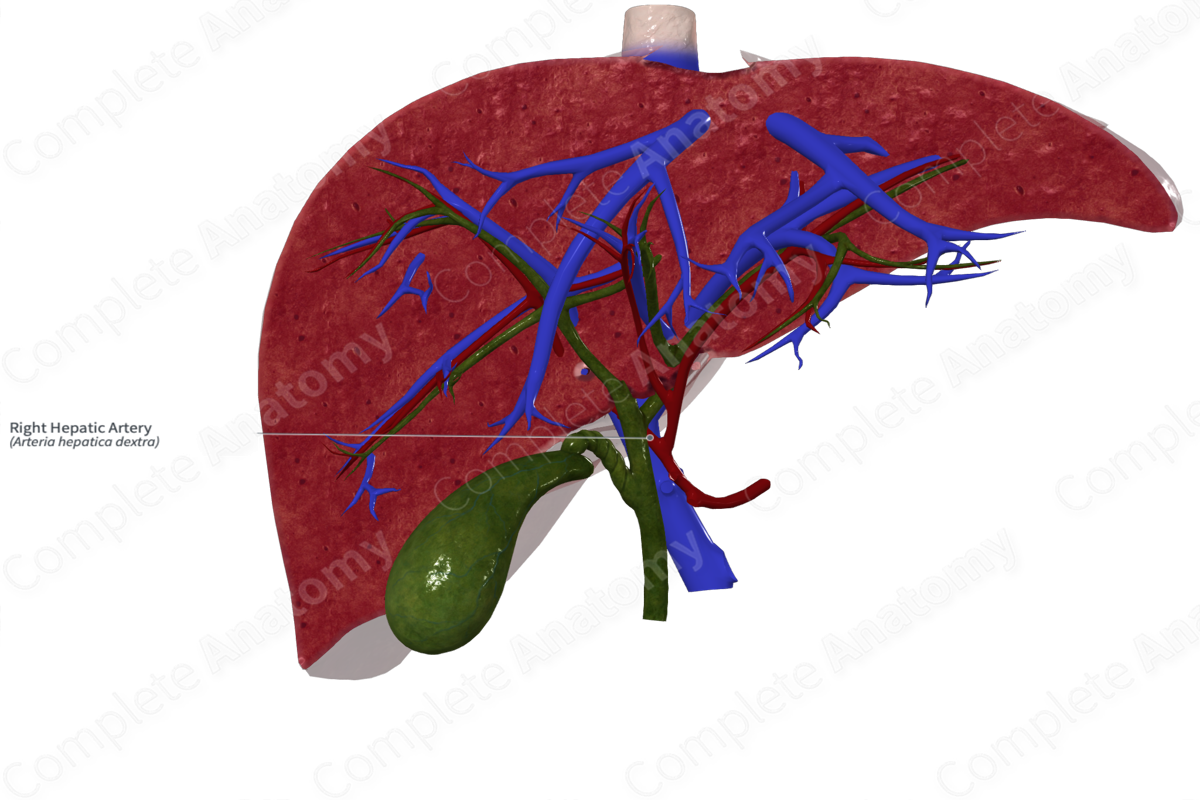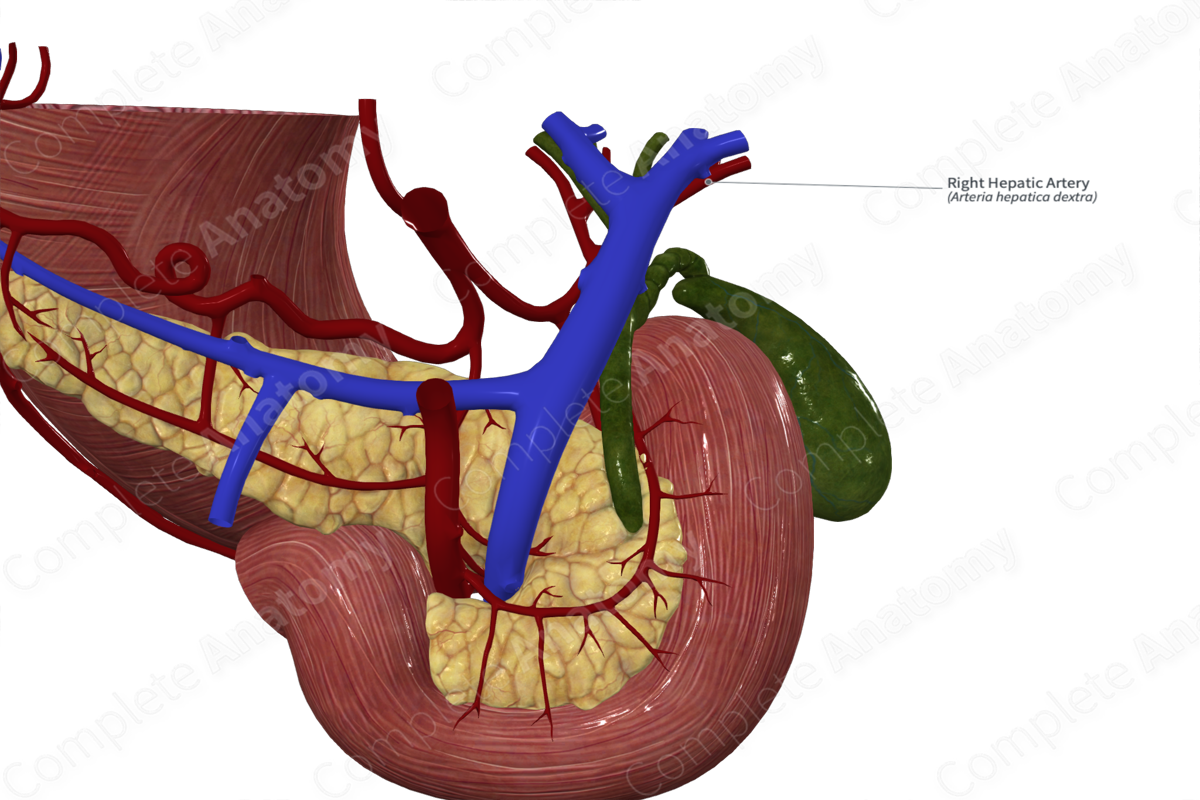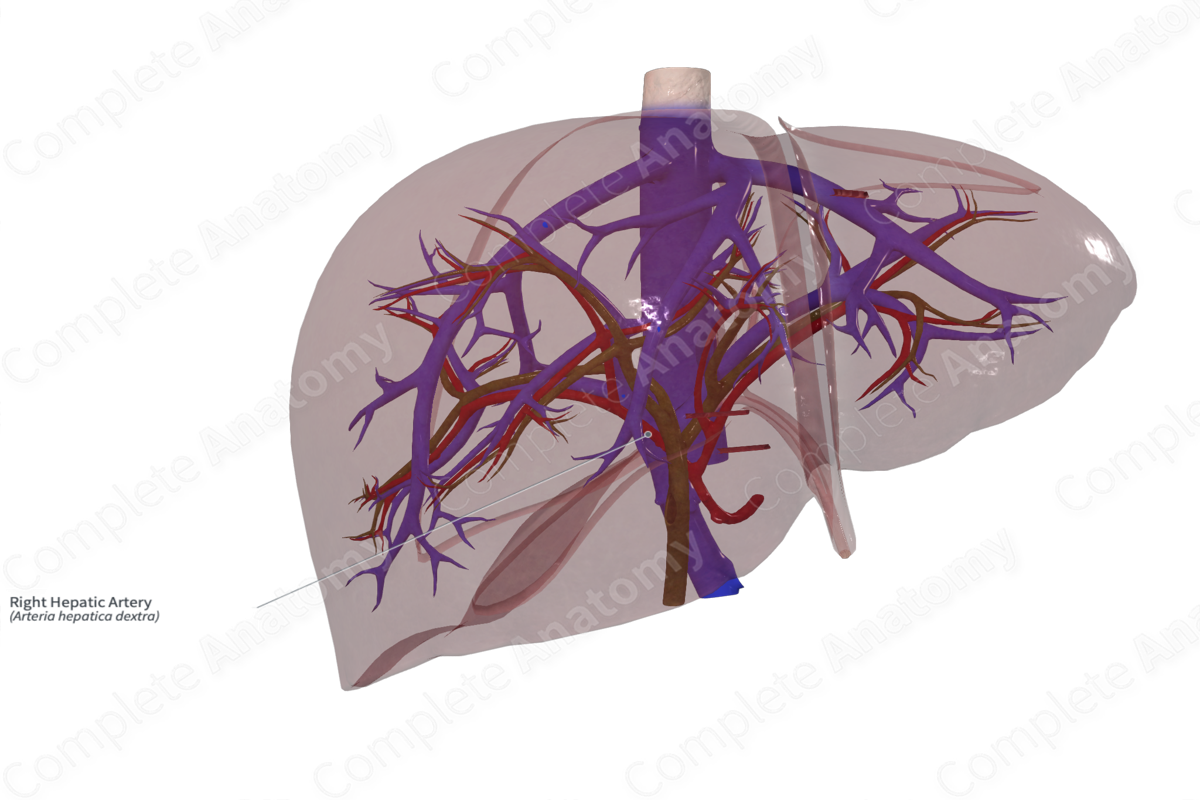
Quick Facts
Origin: Proper hepatic artery.
Course: Enters the porta hepatis of the liver.
Branches: Cystic artery, anterior, posterior, segmental (lobar) branches; contributes a right caudate branch to shared vascularization of this lobe.
Supplied Structures: Gallbladder and right “functional” lobe of the liver that is composed of segments I (caudate lobe), V, VI, VII and VIII.
Origin
The right hepatic artery arises from the proper hepatic artery.
Course
The proper hepatic artery travels nearly vertically within the hepatoduodenal ligament. It is related to the common bile duct to its right and the portal vein posteriorly. At a variable position along its course, it branches into right and left hepatic arteries. Most often the bifurcation occurs just inferior to the liver where the right hepatic artery would angle off to the right, usually crossing posterior to the common bile duct to enter the liver parenchyma.
Anatomical variation in the disposition of the arteries to the liver occurs in about one third of individuals (Covey et al., 2002; Saba and Mallarini, 2011). The right hepatic artery usually crosses posterior to and is closely related with the common hepatic duct. This proximity means that it is often involved in biliary duct cancers, and before the left hepatic artery. On the occasion where it crosses anterior to the common hepatic duct, it is vulnerable to injury during biliary duct surgery such as cholecystectomy.
Branches
The right hepatic artery usually gives off the cystic artery, though this is quite variable. It also supplies the right “functional” lobar segmental arteries, the end arteries to the liver. It usually has a right caudate lobar branch that shares the vascularization of this lobe with a branch from the left hepatic artery.
Supplied Structures
The right hepatic artery supplies the gallbladder and right “functional” lobe of the liver, i.e., segments I (caudate lobe), V, VI, VII and VIII.
List of Clinical Correlates
- Cholecystectomy
References
Covey, A. M., Brody, L. A., Maluccio, M. A., Getrajdman, G. I. and Brown, K. T. (2002) 'Variant hepatic arterial anatomy revisited: digital subtraction angiography performed in 600 patients', Radiology, 224(2), pp. 542-7.
Saba, L. and Mallarini, G. (2011) 'Anatomic variations of arterial liver vascularization: an analysis by using MDCTA', Surg Radiol Anat, 33(7), pp. 559-68.
Learn more about this topic from other Elsevier products
Right Hepatic Artery

The right hepatic artery is, by definition, an artery arising from the superior mesenteric artery and is present in approximately 12% of the population [7].

